#black medick
Text



Giverville (2) (3) by stanze
#abandoned houses#graveyard#flowers#black medick#hop clover#scarlet pimpernel#red chickweed#france#upper normandy
12 notes
·
View notes
Text
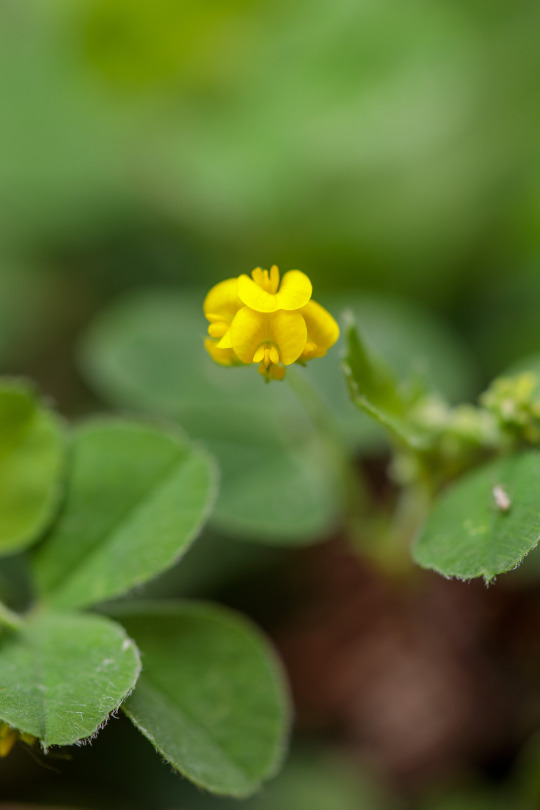
Black Medick
Up close with the tiny yellow flowers of black medick, in the garden.
#30dayswild#black medick#canon#canonuk#flora#flower#garden#medicago lupulina#nature#outdoors#petals#plant#plants#spring#springwatch#yellow
4 notes
·
View notes
Photo
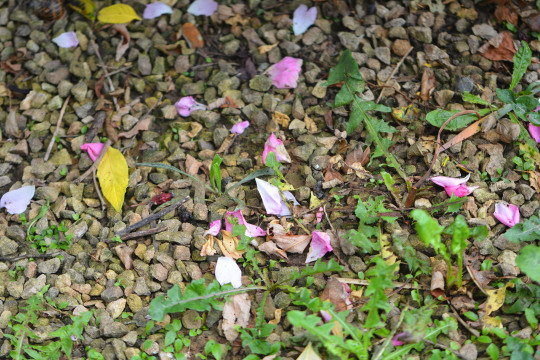
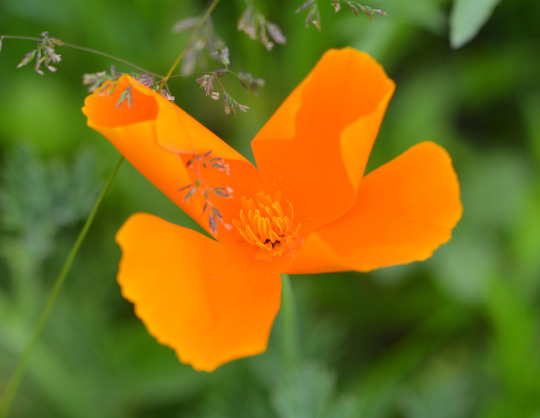

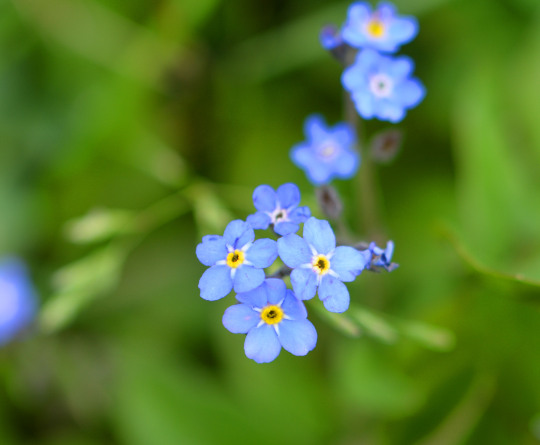
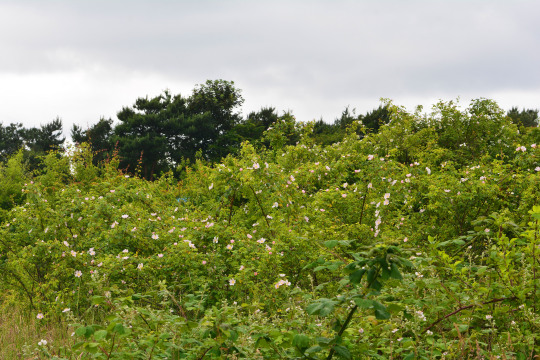





07/06/2022-Lakeside and home
Photos I took today in this photoset are of; fallen leaves and rose pettles on the ground in the front garden a common and pretty sight lately with the changeable weather in a time of bloom, a lovely orange flower and flax in the flower bed out the front which I saw on my way to Lakeside which I see here every year I was so excited they have emerged and some forget-me-not nearby which I’ve not often seen here before, this colourful set of flowers was so uplifting and cheery to see on what was a grey lunch time walk it is a real oasis in the area out the front whilst I love the trees out the front too. Then there is two views at Lakeside, a grass vetchling there, another view at Lakeside and as some brilliant sunshine came this evening after I finished working the final two pictures of Woodpigeon, Collared Dove, Feral Pigeon and House Sparrow memorably all together on the roofs of the garages I enjoy it when the three dove/pigeon species are all next to each other and I’d not seen a Feral Pigeon out the back for a little while so I welcomed it, and the last photo is of a Jackdaw out the back it was great to use today’s sun for photos with these birds.
Key species seen today
Vetch, bird vetch and grass vetchling-I enjoyed seeing and taking photos of both vetch and grass vetchling flowers I am loving having around of late and also I liked seeing and getting a photo of a flower I anticipated would be out soon some lovely bird vetch at Lakeside a great long plant so it was really good to appreciate all three of these similar flowers and their differences.
White clover-As with last night and recent weeks I loved seeing the landscape carpeted in these pretty flowers they do really look amazing with so many of them together such a nice solid colour as the eighth picture in this set looking into the bowl at Lakeside shows.
Brilliant beetles-I enjoyed two cracking views of a cantharis rustica soldier beetle on a dandelion and a Swollen-thighed beetle on an oxeye daisy just like last Tuesday, two dazzling beetle species I am loving seeing lately which it was great to see and take photos of.
Captivating birds-On my lunch time walk I found myself really tuning into the natural world and enjoying a great bit of escapism in my day and whilst as predicted with the route my quick one around the eastern meadows of the site I do it was more of a flower and insect walk encounters with two bird species epitomized this most for me, two adorable fluffy yellow young Blue Tits after seeing one on the balcony feeder as well as a young Starling with adults before leaving and I heard the fluent and clear sound of a lovely Greenfinch calling.
House Sparrow-Seeing them lined up in the buddleia bush out the back is a key theme of this young week so I liked seeing that again today as well as seeing them well this evening taking the photo and I also saw them well by the allotments at Lakeside at lunch time making it a standout bird today that I am having a great year for. The one in the photo did a good impression of a Wren or Dartford Warbler with its tail feathers up.
Other flora and fauna seen today was; Carrion Crow well from home, Goldfinch, a bee, lots of lovely lesser stitchwort which I really enjoyed seeing the first time I recall seeing it at Lakeside, heath-spotted orchid, scarlet pimpernel, black medick, broad-leaved clover, possible shepherd’s purse out the front, cleavers out the front, dandelion type flowers, my first dock of the year which pleased me at Lakeside, bindweed well again like last Tuesday, lots of roses standing out in the landscape well and I also heard Greylag Goose at Lakeside. It was nice to admire the grasses of Lakeside so high again.
#grass#grass vetchling#vetch#bird vetch#birds#birdwatching#hampshire#england#uk#world#nature#happy#peaceful#tranquil#relax#earth#europe#black medick#house sparrow#collared dove#woodpigeon#carrion crow#jackdaw#greenfinch#blue tit#cantharis rustica soldier beetle#swollen-thighed beetle#lesser stitchwort#flowers#insects
2 notes
·
View notes
Text

Fabaceae Medicago lupulina
Black medick
Identification via Pl@ntNet
0 notes
Text
Chemically sterilized...or mechanically sterilized?
It is clear that applying chemicals to your yard and landscape, be it fertilizers, weed killers, or pesticides, has devastating effects to the community of life that is present in every place.
But is the terrifying decline in insects explainable by chemicals alone?
When i am in mowed environments, even those that I know have no lawn chemicals, they are almost entirely empty of life. There are a few bees and other insects on the dandelions, but not many, and the only birds I see are American robins, Grackles, and European starlings.
Even without any weed killers at all, regular mowing of a lawn type area eliminates all but a few specially adapted weeds.
The plants of a lawn where I live include: Mouse ear chickweed, Birds-eye Speedwell, Common blue violet, Dandelion, Wild Garlic, Creeping charlie, White Clover, Black Medick, Broad-leaved plantain, Mock Strawberry, Crabgrass, Small-flowered Buttercup, Ribwort Plantain, Daisy Fleabane, a few common sedges, Red Deadnettle...That sounds like a lot of plants, but the problem is, almost all of them are non-native species (Only Violets, Daisy Fleabane, and the sedges are native!) and it's. The Same. Species. Everywhere. In. Every. Place.
How come...? Because mowed turf is a really specific environment that is really specifically beneficial to a number of almost entirely European plants, and presents stressors that most plants (including almost all native north american plants) simply can't cope with.
The plants mentioned above are just the flowering weeds. The grasses themselves, the dominant component of the lawn, are essentially 100% invasive in North America, many of them virulently and destructively invasive.
Can you believe that Kentucky bluegrass isn't even native to Kentucky? Nope, it's European! The rich pasture of the Bluegrass region of Kentucky was predominantly a mix of clover, other legumes, and bamboo. The clovers—Kentucky clover, Running buffalo clover, and buffalo clover—are highly endangered now (hell, kentucky clover wasn't even DISCOVERED until 2013) and the bamboo—Giant rivercane, Arundinaria gigantea—has declined in its extent by 98%. Do European white and red clovers fulfill the niches that native clovers once did? Dunno, probably not entirely.
One of the biggest troubles with "going native" is that North America legitimately does not have native grass species that really fill the niche of lawn. Most small, underfoot grassy plants are sedges and they are made for shady environments, and they form tufts and fancy sprays, not creeping turf. Then there's prairie grasses which are 10 feet tall.
What this means, though, is that lawns don't even remotely resemble environments that our insects and birds evolved for. Forget invasive species, lawns are an invasive BIOME.
It's a terrible thing, then, that this is just what we do to whatever random land we don't cover in concrete: back yards, road margins, land outside of churches and businesses, spaces at the edges of fields, verges at bypasses and gas stations...
Mowing, in the north american biomes, selects for invasive species and promotes them while eliminating native species. There's no nice way to put it. The species that thrive under this treatment are invasive.
And unfortunately mowing is basically the only well-known and popular tool even for managing meadow and prairie type "natural" environments. If you want to prevent it from succeeding to forest, just mow it every couple of years.
This has awful results, because invasive species like Festuca arundinacea (a plant invented by actual Satan) love it and are promoted, and the native species are harmed.
Festuca arundinacea, aka Tall Fescue, btw is the main grass that you'll find in cheap seed mixes in Kentucky, but it's a horrific invasive species that chokes everything and keeps killing my native meadow plants. It has leaves like razor blades (it's cut me so deeply that it scarred) and has an endosymbiont in it that makes horses that eat it miscarry their foals.
And this stuff is ALL OVER the "prairie" areas where I work, like it's the most dominant plant by far, because it thrives on being mowed while the poor milkweeds, Rattlesnake Master and big bluestems slowly decline and suffer.
It's wild how hard it is to explain that mowing is a very specific type of stressor that many plants will respond very very negatively to. North American plants did not evolve under pressures that involved being squished, crushed, snipped to 8 inches tall uniformly and covered in a suffocating blanket of shredded plant matter. That is actually extremely bad for many of the prairie plants that are vital keystone species. Furthermore it does not control invasive species but rather promotes them.
Native insects need native plant cover. Many of them co-evolved intimately with particular host plants. Many others evolved to eat those guys. And Lord don't get me started on leaf removal, AKA the greatest folly of all humankind.
So wherever there is a mowed environment, regardless of the use of chemicals or not, the bugs don't have the structural or physical habitat characteristics they evolved for and they don't have the plant species they evolved to be dependent on.
Now let's think about three-dimensional space.
This post was inspired when I saw several red winged blackbirds in the unmowed part of a field perching on old stems of Ironweed and goldenrod. The red-winged blackbirds congregated in the unmowed part of the field, but the mowed part was empty. The space in a habitat is not just the area of the land viewed from above as though on a map. Imagine a forest, think of all the squirrels and birds nesting and sitting on branches and mosses and lichens covering the trunks and logs. The trees extend the habitat space into 3 dimensions.
Any type of plant cover is the same. A meadow where the plants grow to 3 feet tall, compared with a lawn of 6 inches tall, not only increases the quality of the habitat, it really multiplies the total available space in the habitat, because there is such a great area of stems and leaves for bugs and birds to be on. A little dandelion might form a cute little corner store for bugs, A six foot tall goldenrod? That's a bug skyscraper! It fits way more bugs.
It's not just the plants themselves, it's the fallen leaves that get trapped underneath them—tall meadow plants seem to gather and hoard fallen leaves underneath. More tall plants is also more total biomass, which is the foundation of the whole food chain!
Now consider light and shade. Even a meadow of 3ft tall plants actually shades the ground. Mosses grow enthusiastically even forming thick mats where none at all could grow in the mowed portions. And consider also amphibians. They are very sensitive to UV light, so even a frog that lives in what you see as a more "open" environment, can be protected by some tall flowers and rushes but unable to survive in mowed back yard
#anti lawn#kill your lawn#native plants#the ways of the plants#native plant gardening#plants#random#bitching about mowing again
850 notes
·
View notes
Text
It’s time for the last ever official Path Report! I’m moving this weekend but I wanted to make time for one final look-around to see what is growing down the little path that runs behind my house.
Starting off strong with one of my favourite flowers to spot, Pink Wintergreen:

There was a whole bunch of Bedstraw everywhere as well:

And the wild roses are mostly done blooming; a bunch of them had rust fungus.

The Nodding Onions are starting to put up some buds:

Alongside the aspen, Saskatoon bushes and wild roses, there are an absolute metric shit-ton of beaked hazelnuts along the path as well:
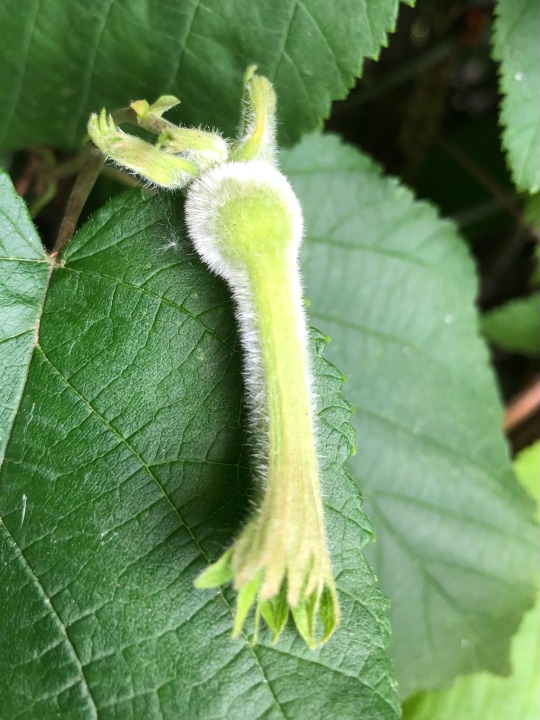
There were also many of the usual suspects of path-adjacent flowers, like feral Canola:

Vetch:
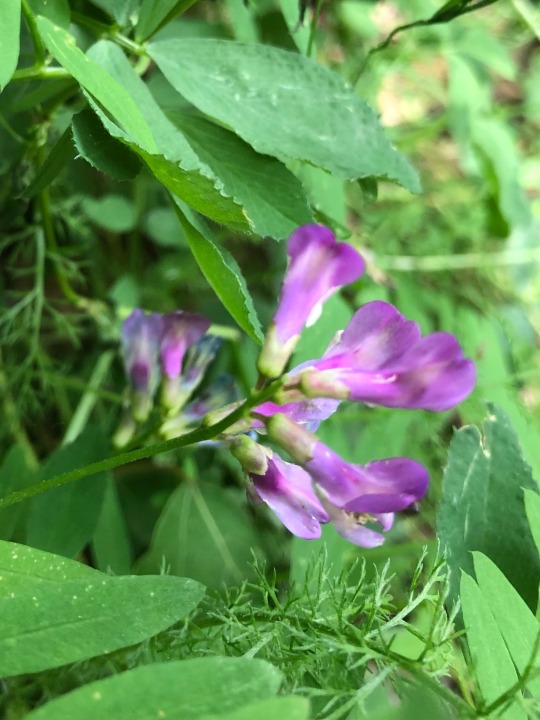
Cow Parsnip:
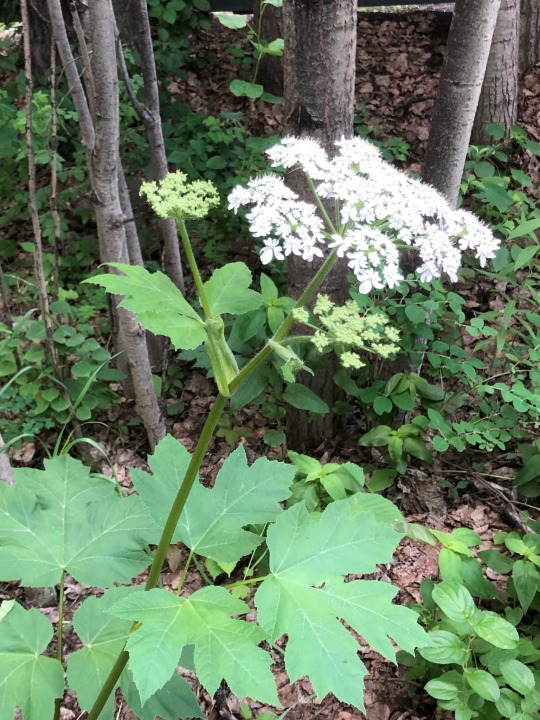
Black Medick:
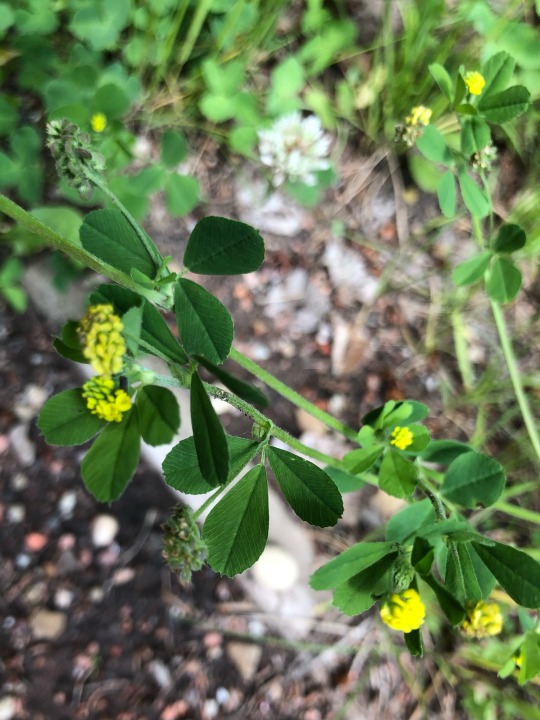
And a personal favourite, Pineapple Weed:

54 notes
·
View notes
Text
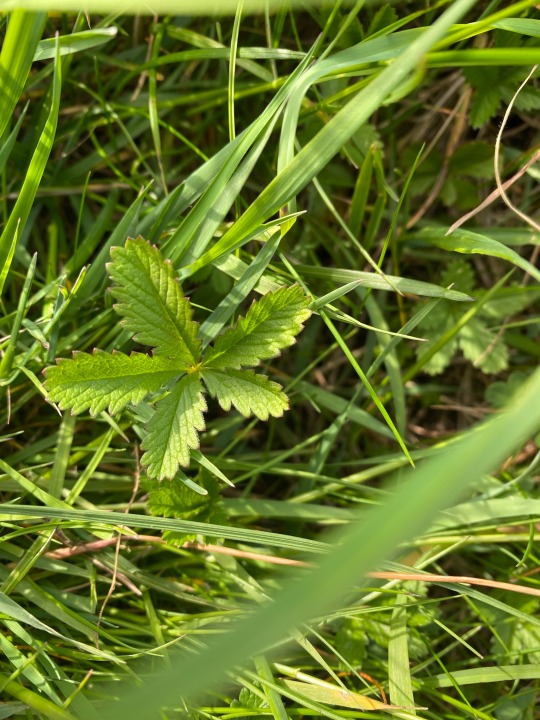
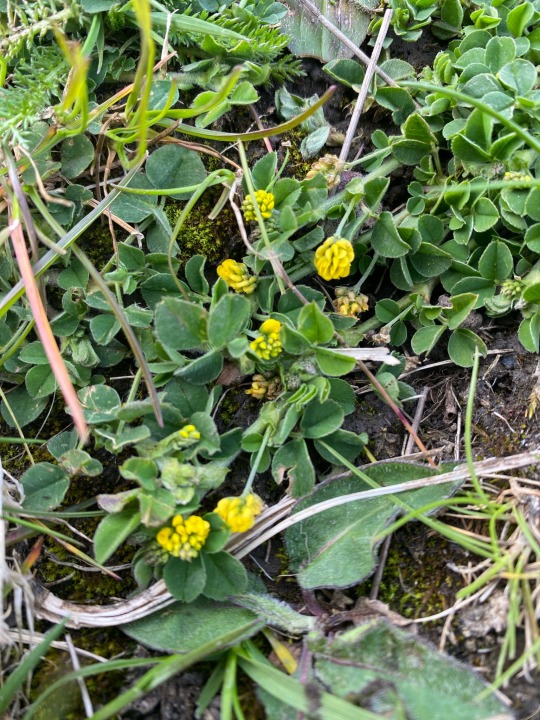




some new photos from field A, my local field! it is a wet species-poor grassland, which i believe is also nutrient poor. i’m not sure about the pH, but i assume it’s quite neutral!
the first photo shows some creeping cinquefoil, a type of plant that thrives in low-quality, nutrient-poor soil. it is a pioneering species similar to the black medick! it has small yellow flowers similar to buttercups from june to september.
i think there’s a multitude of reasons for this plant in particular to be present. the field has a downward slope on both the western and northern sides, which plateaus out toward the southeastern side. the most cinquefoil i saw was on the slopes where the soil would be most free-draining, so it makes sense it would be seen there.
the second photo shows some black medick, a pioneering plant that thrives in well-draining soil. i found this in the same area as the cinquefoil, further indicating the low soil quality and free draining conditions. i say it indicates poor soil quality as the black medick is a pioneer species, meaning that it colonises bare and rough ground to prepare it for less hardy species!
the third photo shows some fairy ring champignon that regularly occurs on the field! this only shows part of the total ring; a range of it was still covered in long grass, so there weren’t as many mushrooms on that side. it benefits from the freshly cut grass. their season is april to november, with the best season for collecting them being late spring! they prefer soil that is sandy, and with lower water / fertility. poorer nutrient levels line up with the other species present on the field, and while the conditions aren’t completely to its preference (this is definitely a wet grassland) it is still able to grow!
the fourth photo shows again some lesser knapweed, a hardy perennial plant that flowers in early summer to as late as september. it is a great contributor for pollination despite being considered an undesirable weed, which is a common theme. it is a generalist that tends to prefer wetter soils. this knapweed can be found throughout the field, both on the banks and across the flatter area as well!
the fifth photo shows a large patch of creeping thistle. this is an area toward the central-northeastern corner of the field that is regularly covered in tall thistles, and grows back whenever it’s cut! it is perennial, and being “creeping” means that its roots literally creep through the soil in order to spread, which allows the creeping thistle to be a competitive coloniser. this is possible due to the plant being dioecious, meaning it has both male and female parts. this of course means that the patch is a clonal colony that self-reproduces, too! it does this in tandem with regular reproduction via pollination. it blooms from june to august. this is another competitive generalist species that can be found in any kind of field, as well as along roadside verges and even growing on driveways!
the last photo wasn’t taken on the field, actually, but on the way back. it shows a dense (and quite tall!) patch of creeping buttercups beside a house! i just thought this was cool. i’m excited to see it flowering, hoping that the owners don’t mow it.
3 notes
·
View notes
Text
Just as Oldive dealt with his first patient, another dolphin nosed through its fellows, clicking in such an authoritative tone, the others parted for it.
“You really should wait your turn,” Oldive said in a gently chiding tone.
The dolphin smiled and turned its head this way and that as the bright black eyes fixed themselves on the healer.
“Bad back!” the creature said quite plainly.
“My goodness!” The remark caused a brief silence, almost an appalled one that a sea creature would make such a statement.
Oldive held out his hand to the creature’s nose as if absolving it from mentioning what few did. “How could you know?” Oldive asked. Despite his wetting, the hump was not that apparent under his carefully contrived shirt and the creature had only observed him from the front.
“Seeee. Seee. I Bit, Oll-deeeve medick.”
“I don’t really believe what I’m hearing,” Curran murmured to Menolly. “And it knew about,” He closed his lips. “How could it see?”
“Perhaps what Persellan said about the creatures …?” Oldive looked at Menolly for the word.
“Sonar ...” she supplied.
“Is very true. Proof positive,” and because Oldive appeared cheerful about the matter, everyone began to relax. “What is it? This sonar?”
Darn I thought the dolphin was gonna be like "just like me!!" But nope.
Too bad Master Oldive doesn't actually get to be anything more than a background character so far.
2 notes
·
View notes
Text

Pavement plant - black medick
#nature#nature in the city#london#city wildlife#urban wildlife#everyday nature#harringay#make time for nature#wildflowers#pavement plants
1 note
·
View note
Text
Troubleshooting Common Lawn Problems Related To Lawn Care In San Diego
Property owners in San Diego wish to keep their lawns healthy and green. However, lawn care in San Diego is a tedious and never-ending process. Despite the continuous attempts for lawn maintenance, gardeners miss a few things. Their mistakes and environmental stress make the lawn susceptible to damage and common lawn problems.
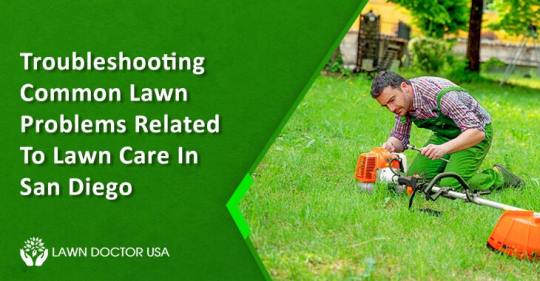
7 Common Lawn Problems and Solutions
Although all mistakes are not within their control, they can deal with common problems if they know the right solutions. They can manage their lawns by eliminating these issues. However, most gardeners take lawn service in Orange county, so they are unaware of them. They don’t know what troubles their yard and disrupt its productivity. However, the information is important for the safety and well-being of their lawns. In this blog, we will talk about the topic and list the most common lawn problems and their solutions.
1. Uneven Grass Growth
Uneven grass growth is inevitable in any lawn. Even after proper maintenance, you cannot keep it away. The issue occurs if the particular area doesn’t receive adequate sunlight, water, and nutrients. It happens when trees, walls, or objects block the sun and prevent the sunlight from reaching those areas.
These deficiencies lead to poor and uneven growth, whereas other areas receive enough sunlight and grow well. The gap widens at the time of grass mowing and mulching. This gap offers a free space for weeds, diseases, and pests to develop and thrive. Hence, it is important to control uneven growth to avoid damage.
Solution
Prune your trees from time to time to thin out the canopy and promote better sunlight penetration. Use different varieties of shade-tolerant turf grasses or ground covers. Apart from these solutions, you can spread a layer of gravel or perennial blade to combine with shady areas. At last, focus on proper lawn maintenance in San Diego while keeping the land requirements in mind.
2. Weed Growth
Invasive weeds like dandelion, lesser trefoil, black medick, chickweed, yarrow, buttercups, daisies, etc, often grow over the grass. Weeds multiply if they receive adequate moisture and an ideal environment. They weaken the grass plants, making them vulnerable to pest infestation, fungi attack, and diseases. Despite the attempts, weed growth is hard to avoid, but you can take treatments to eliminate the growth on time.
Solution
Mow the lawn regularly and maintain the ideal grass length. Follow a proper irrigation routine according to weather conditions. During a dry spell, try to irrigate the lawn in the morning to prevent weed growth. Leave grass clippings, and add fertilizers and organic herbicides to eliminate existing growth. You can take lawn treatment in San Diego premises if the growth has gone out of control.
3. Bare Spots
Foot traffic, improper mowing, grub infestation, poor soil conditions, pet urine, and fungal diseases give birth to bare spots. These empty spots uncover the ground, making the yard look bald and patchy. Bare spots are more susceptible to weed and moss growth compared to the areas.
Solution
Reseed the bare spots using organic and toxin-free seeds to stimulate new growth. Dig up the bald spots at least 6 inches deeper in and around the area. Add a layer of fertilizers and compost, and maintain ideal soil moisture until the new seeds start sprouting. You can also try deep watering the area in sloped areas.
4. Brown Grass
The brown grass stands out in the green yard, affecting its outlook and beauty. Lawn grass turns brown when roots fail to absorb nutrients and water from the soil. Apart from it, unstable soil pH is among the root causes of the problem.
Solution
Diagnose the cause behind the brown grass growth. It can occur due to environmental factors such as lack of water or too much sunlight exposure. Pest infestations, lawn diseases, and environmental stress are some other reasons. If the cause is environmental stress, then adjust your watering and mowing habits. Follow a proper routine, install shading to limit sunlight exposure, and focus on lawn maintenance in San Diego. Fertilize your lawn, aerate the soil and keep your grass healthy.
5. Pet Damage
Pet damage can gravely impact a lawn. Dogs, cats, and other animals dig, trample, urinate and defecate on the lawn grass. These activities damage the soil and release Nitrogen and Ammonia, leading the lawn to bare patches and dead grass. It also encourages weed and pest growth.
Solution
Fence off the area to restrict pet entry inside the lawn. If that’s not an option, then clean the lawn if your pet urinates or defecates on it. It will prevent the buildup of Ammonia and Nitrogen that harms the soil.
If your pet has a habit of digging, then try to discourage them and fill the holes with soil or sand. Apart from it, follow an effective routine for lawn care in San Diego, regularly fertilize and aerate the soil
6. Lawn Rust
Lawn rusts are a type of fungal disease growing on the surface of grass blades. They cause unsightly yellow-orange powdery spots on lawns. This fungus is particularly active during warm, and wet weather and grows after getting adequate moisture. Rusts weaken grass plants and reduce turf density, allowing other sources to damage the lawn.
Solution
To control rust, keep the lawn well-hydrated, especially during dry spells. Properly fertilize your lawn to maintain healthy turf. Mow the grass at the correct height and avoid cutting below three inches. Apply organic fungicides to control the fungus growth or take professional lawn treatment in San Diego.
7. Lawn Moss
Lawn moss is a type of plant that develops in damp, shady areas and quickly spread across the yard. It is an undesirable plant that blocks the sunlight and chokes grass and nearby plants. Moss has shallow roots that thrive in wet, acidic soil. The plant can crowd early and takes food sources away from other plants and grass.
Solution
To control moss growth, improve the waste drainage capacity in your lawn. Ensure the soil is adequately drained because moss thrives in wet, soggy soil. You can try safe chemical treatments such as iron sulfate to eliminate moss. Add lime to the soil or overseed the area with organic grass seeds. Mow the grass frequently and remove dead moss. It will help keep moss growth under control.
How Can Lawn Doctor USA Help With Lawn Treatment In San Diego?
Lawn Doctor USA is a lawn care and maintenance company providing lawn service in San Diego, California. They have a team of experienced lawn care professionals who can help identify and treat issues affecting your lawn.
Lawn Doctor USA team uses a variety of techniques, from traditional treatments to organic options to ensure adequate growth & wellness. Their experts offer beneficial advice for lawn maintenance in San Diego.
Conclusion
Lawns quickly become overrun with weed growth, moss, rust, and other common problems. Hence, controlling common lawn problems is essential to promote healthy lawn growth. Taking a proactive approach to lawn care in San Diego can prevent these issues from frequently occurring on your lawn.
Source: Troubleshooting Common Lawn Problems Related To Lawn Care In San Diego
0 notes
Text
Wildflowers - Black Medick
Wildflowers – Black Medick
Black medick is a procumbent annual, biennial or short-lived perennial wildflower. It is native in grassy places and rough ground, this particular plant was growing the the cracks of a pavement.
Black medic wildflower
Black medick has small (2–3 mm) yellow flowers grouped in tight bunches. On larger plants the flower heads may reach 8 mm or more. The fruit is a single-seeded pod, 1.5 to 3 mm in…

View On WordPress
0 notes
Photo

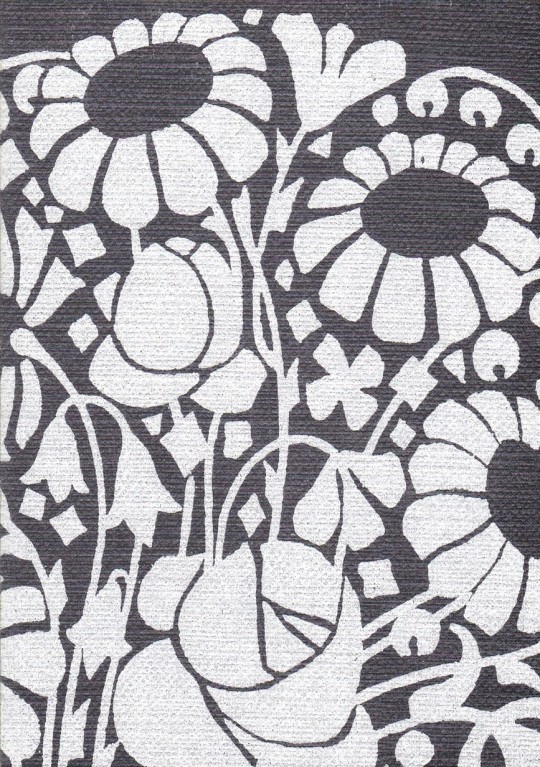
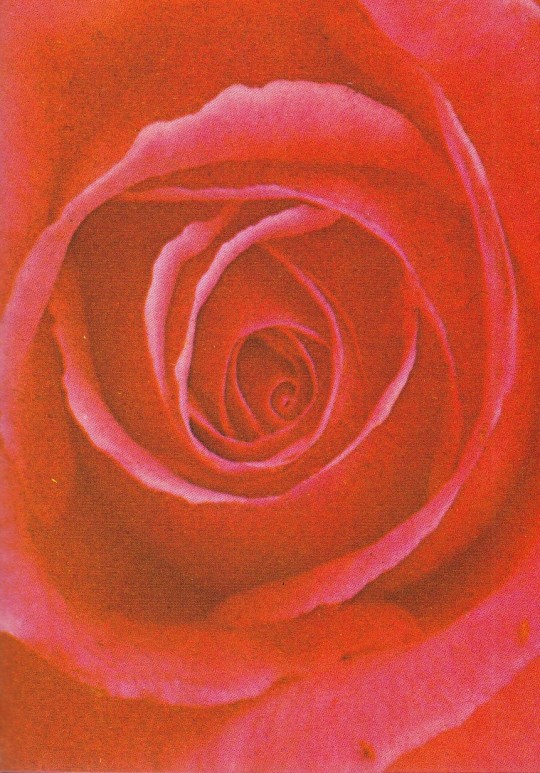




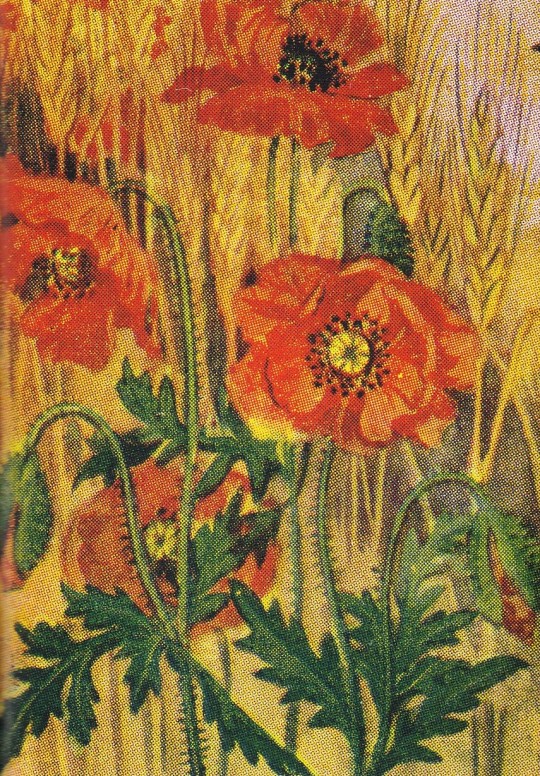

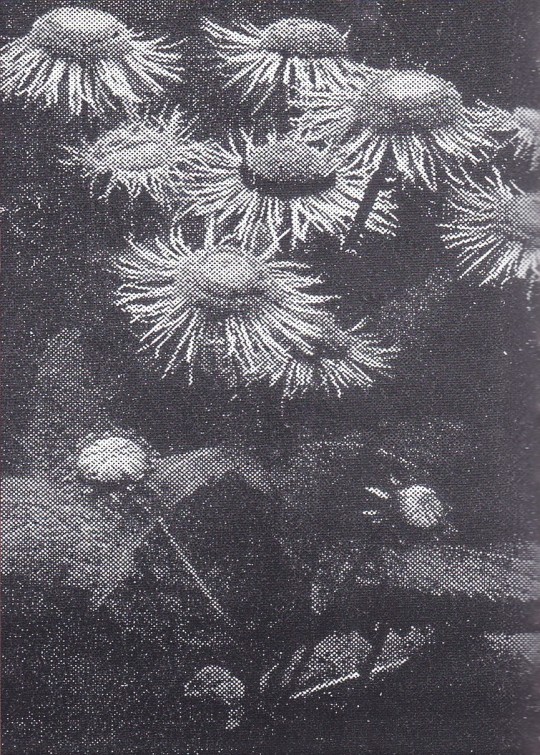
Black Medick
by Paul Morrison , Edited by Kurt Vanbelleghem.
Imschoot, Ghent 2004 , 61 pages, 21 x 16 cm, Limited edition of 1000 copies. Full-bleed color and black-and-white images. ISBN 9077362134
euro 60,00 n/a
email if you want to buy :[email protected]
Publisher Imschoot uitgevers describes Paul Morrison’s Black Medick as “A bible of natural phenomena and botanical inspiration.” Morrison’s book is bound in leatherette with pages colored about the edges; as is the case with a few of Imschoot’s editions, Black Medick directly mimics the physical form of a Bible – bookmark and all. However, this is a wordless book that extols the endless beauty and variety of something as simple as a common garden weed. Black Medick confronts its subject not at its botanical root, but at its representational root: the photographic pixel. The pixel thus becomes a tense limit of expression, communication, and understanding – and a back lot gone to seed or a reedy shoreline are the scenes of the miracles it depicts.
With every page filled with Paul Morrison’s appropriated landscapes and enlarged floral studies, this small and glossy book is visually interesting yet curious in the strange juxtapositions of colour and black & white images. A British painter known for his conceptual landscapes, Black Medick is like a picture scrapbook for this interesting artist.
29/01/21
orders to: [email protected]
ordini a: [email protected]
twitter:@fashionbooksmi
instagram: fashionbooksmilano, designbooksmilano tumblr: fashionbooksmilano, designbooksmilano
#Paul Morrison#natural phenomena#botanical inspiration#floral studies#artist's book#black medick#luppolina#fashionbooksmilano
9 notes
·
View notes
Photo
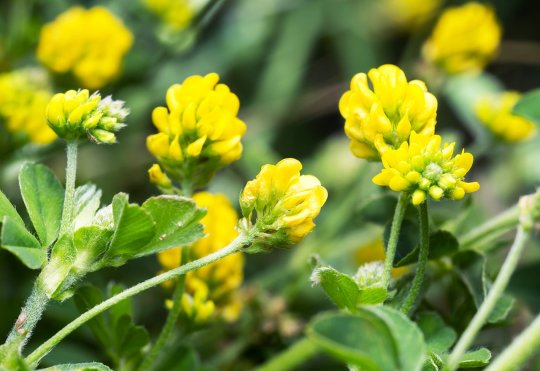
New Plant!
1. Black Medick
1 note
·
View note
Photo
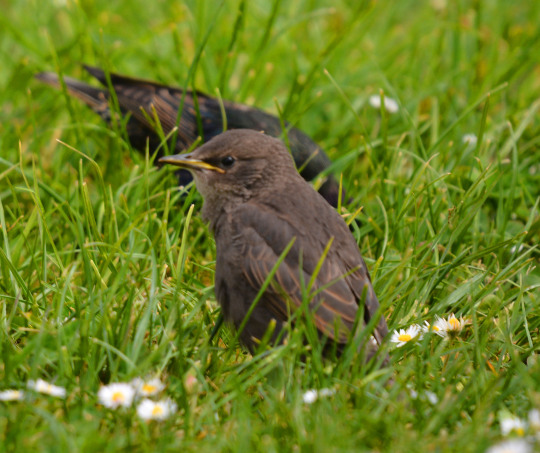

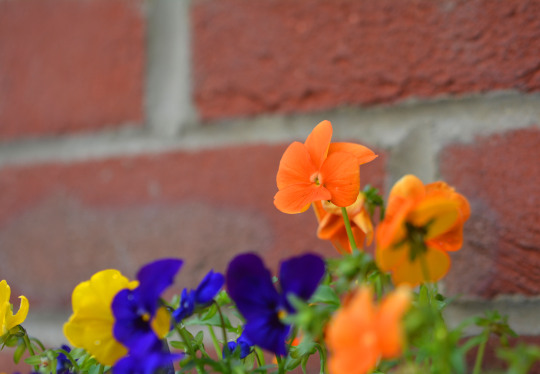


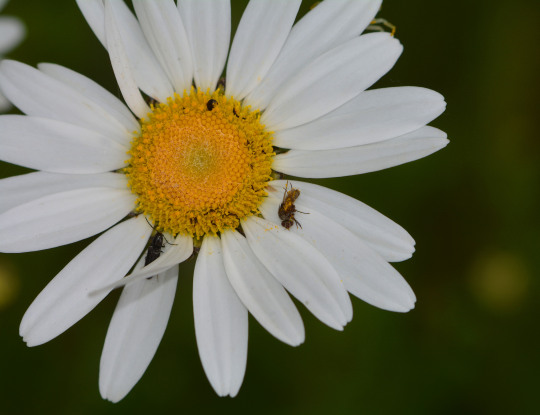

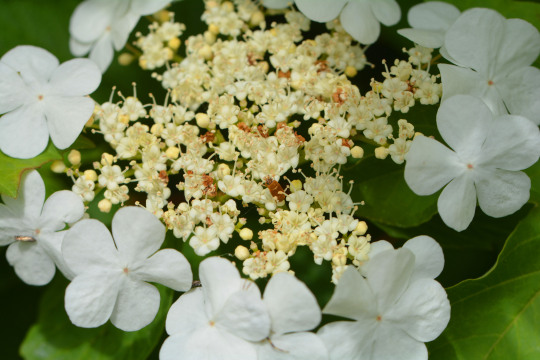


12/05/2022-Young Starlings and more at home and Lakeside
I saw my first young Starlings of the year today which I had been waiting for. It was brilliant to see two of these cute fresh birds with adults in the garden, seeing them calling and some feeding too. I also had similar with the young ones looking nice among the daisies on the green areas by Lakeside on my way back from my lunch time walk. Its always such an exciting time of year and one of my favourites particularly in the garden bird year when these are around. I took the first picture in this photoset of a young Starling by Lakeside and second picture in this photoset of one in the garden. I also enjoyed seeing and photographing Feral Pigeon and Woodpigeon with some nice interaction between birds of the latter on the roof visible from my room, and seeing lots of House Sparrows, Goldfinch and Jackdaw from home out the front and back today. I took the third picture in this photoset of the pretty multi coloured flower pot in the front garden.
On my perimeter Lakeside walk today going on a route round in a square covering lots of areas of the country park as my weekly perimeter walk always does, it was a great walk for zooming into the little things. In the meadows it was so exciting to see the grass really getting higher and developing so well. It feels so hopeful to see this rich source of varied life springing up. I enjoyed seeing special flowers on my lunch time walk including; black medick or possibly some of it like the patch on the green out the front in the fourth picture in this photoset may have been lesser trefoil lovely little yellow flowers close to the ground that I loved learning last year and have enjoyed seeing on the green out the front this week I saw some great bits of it at Lakeside today too, white campion the first I’ve ever seen at Lakeside and a third campion for me this year after red and the sea campion in Pembrokeshire so this excited me, cleavers which I really enjoyed seeing and photographing also known as stickywilly I have realised I have long known these and remember them a lot from walks and days out in my childhood, clovers I believe broad-leaved and white but they could possibly have been alsike clover, daisy, sorrel and cow parsley looking nice together as shown in the seventh picture in this photoset, my first oxeye daisies out at Lakeside this year like the one in the sixth picture in this photoset, vetch, speedwell, cuckooflower, garlic mustard, bluebells still going strong, yellow iris adding some great yellow to the landscape and buttercups carpeting the place beautifully in places. I took the eighth picture in this photoset of some flowering along the northern path.
And the flowers hosted insects and other creatures well as I enjoyed beetles, a bright white spider on and under an oxeye daisy as I have seen here before and a possible thrip on the flowers. I like it when you notice a flower then end up noticing other things on and around it and spending time with them. As a bit of sun that had shone well early today but it clouded over a bit as the day went on shone brightly on some lush green leaves a bit of a sun trap along the northern path I loved zooming in to see common blue damselflies flitting around and a fine Speckled Wood butterfly soaking up the sun.
It was a brilliant walk of birds too as I got an epic view of a male Blackcap belting out its song near to the visitor centre. It was right next to me and it was so pleasant and energetic as I soaked in its beautiful song with it being so loud right next to me. I didn’t know where to look at the western shore of Kornwestheim lake as I spotted a male Tufted Duck perhaps closer than I’d ever seen one at Lakeside before having a preen allowing for glorious view, two adorable Mallard ducklings with their mother looking quite bigger now and a Canada Goose coming towards me, with the first Mute Swans I’ve seen at Lakeside since February I believe swimming rapidly around the lake. This may be a regular pair that I knew here for years which seem to come here less now so it was good to see them, I caught up with them further round the lake to get a photo which I tweeted tonight on Dans_Pictures. I hope the swans may stay to nest.
I took the ninth picture in this photoset of a lovely green view looking over the northern fenced off area, there were some beautiful views on the walk today I loved immersing myself in the path south of the site walking down this bit quite fast taking in how green everything surrounding it was and getting lost in it a bit. Tonight has been another special night of sky scenes from interesting cloud formations, I took the tenth picture in this photoset of one.
Wildlife Sightings Summary: Blackbird, Starling, Goldfinch, House Sparrow, Blackcap, Feral Pigeon, Woodpigeon, Jackdaw, Magpie, Mallard, Greylag Goose and goslings, Canada Goose, Mute Swan, Speckled Wood, a white butterfly I couldn’t quite tell which, Common Blue damselfly, beetles, thrip and I heard Chiffchaff.
#photography#wildlife#england#mute swan#blackcap#black medick#white campion#uk#cleavers#hampshire#sorrel#cow parsley#birdwatching#birds#birding#swan#geese#sun#sky#speckled wood#beetles#photos#walk#walking#lakeside#lakeside country park#eastleigh#world#happy#thursday
2 notes
·
View notes
Text
Black Medick Has Beautiful Flowers and is Incredibly Useful!
Black Medick Has Beautiful Flowers and is Incredibly Useful discusses all the useful properties of this perennial herb. Learn why you should let this pretty little flower live in your garden and your fields.
Black Medick
Back in February I wrote about finding the first two wildflowers of early spring at work outside our dog play yard. It wasn’t long after that before different wildflowers were coming up and blooming daily. From day to day the roadsides and the pastures in our area were changing color, and some early spring rains did nothing but help the situation. But because there were so many…

View On WordPress
#black clover#black medick#edible wildflowers#hop clover#nonesuch#useful wildflowers#wildflower photographs#wildflowers
1 note
·
View note
Photo

Hop Clover, Black Medick
Medicago lupulina
Fabaceae (Pea or Bean) Family
Photograph taken on May 23, 2020, along the Etobicoke Creek, Mississauga, Ontario.
#wildflowers of southern ontario#Hop Clover#Black Medick#yellow#Medicago lupulina#Fabaceae#Fabaceae family#pea family#bean family#wildflowers#wildflower#flora#flowers#flower#etobicoke creek#mississauga#ontario#canada
5 notes
·
View notes